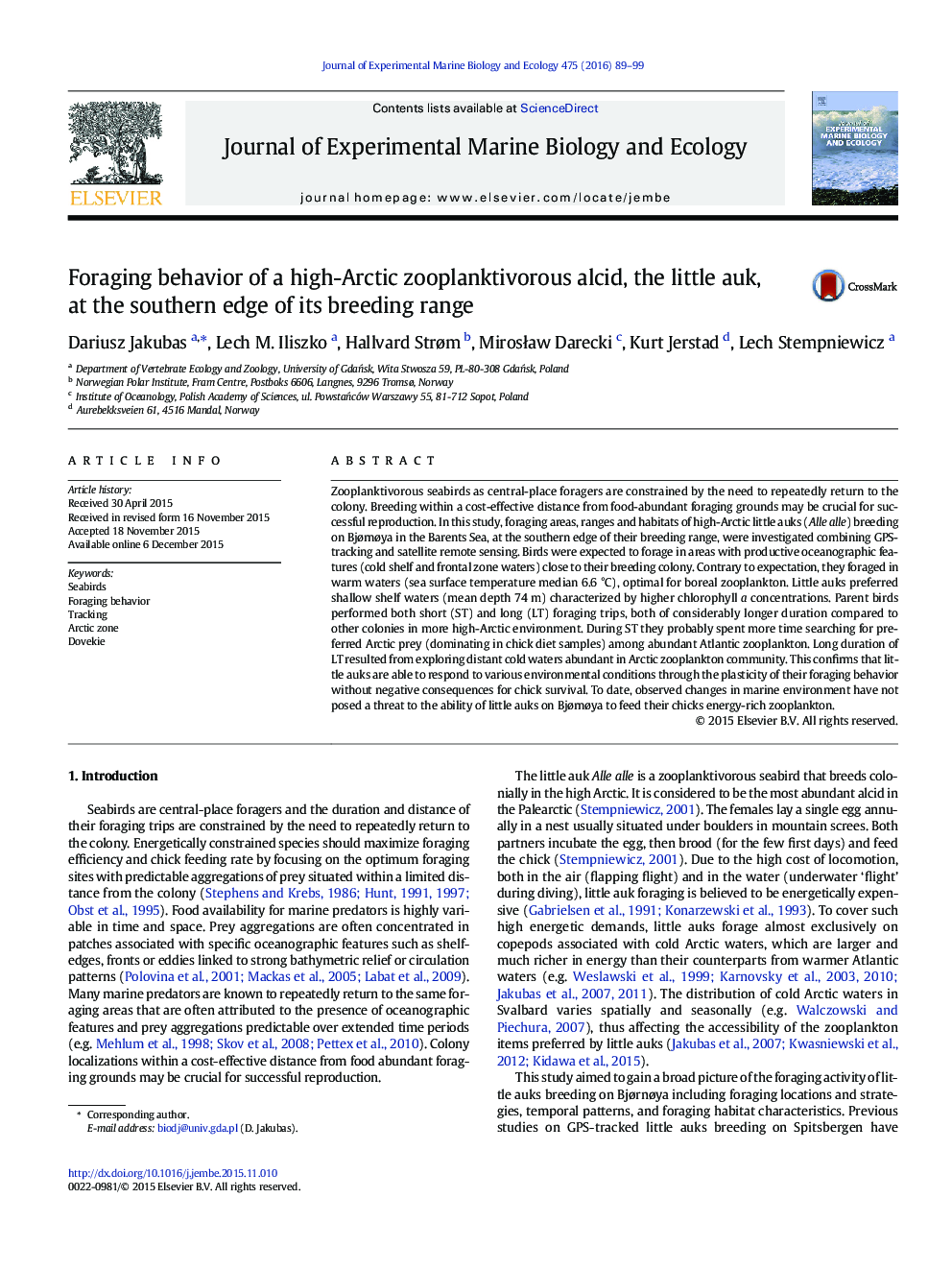| Article ID | Journal | Published Year | Pages | File Type |
|---|---|---|---|---|
| 4395283 | Journal of Experimental Marine Biology and Ecology | 2016 | 11 Pages |
•Little auk foraging was analyzed using GPS-tracking and satellite remote sensing.•Unexpectedly, little auks foraged in warm waters, suboptimal for Arctic zooplankton.•Little auks preferred shallow waters with enhanced chlorophyll a concentrations.•Despite suboptimal conditions, little auks preyed mainly on Arctic zooplankton.•Little auks performed longer foraging trips than birds from high-Arctic colonies.
Zooplanktivorous seabirds as central-place foragers are constrained by the need to repeatedly return to the colony. Breeding within a cost-effective distance from food-abundant foraging grounds may be crucial for successful reproduction. In this study, foraging areas, ranges and habitats of high-Arctic little auks (Alle alle) breeding on Bjørnøya in the Barents Sea, at the southern edge of their breeding range, were investigated combining GPS-tracking and satellite remote sensing. Birds were expected to forage in areas with productive oceanographic features (cold shelf and frontal zone waters) close to their breeding colony. Contrary to expectation, they foraged in warm waters (sea surface temperature median 6.6 °C), optimal for boreal zooplankton. Little auks preferred shallow shelf waters (mean depth 74 m) characterized by higher chlorophyll a concentrations. Parent birds performed both short (ST) and long (LT) foraging trips, both of considerably longer duration compared to other colonies in more high-Arctic environment. During ST they probably spent more time searching for preferred Arctic prey (dominating in chick diet samples) among abundant Atlantic zooplankton. Long duration of LT resulted from exploring distant cold waters abundant in Arctic zooplankton community. This confirms that little auks are able to respond to various environmental conditions through the plasticity of their foraging behavior without negative consequences for chick survival. To date, observed changes in marine environment have not posed a threat to the ability of little auks on Bjørnøya to feed their chicks energy-rich zooplankton.
